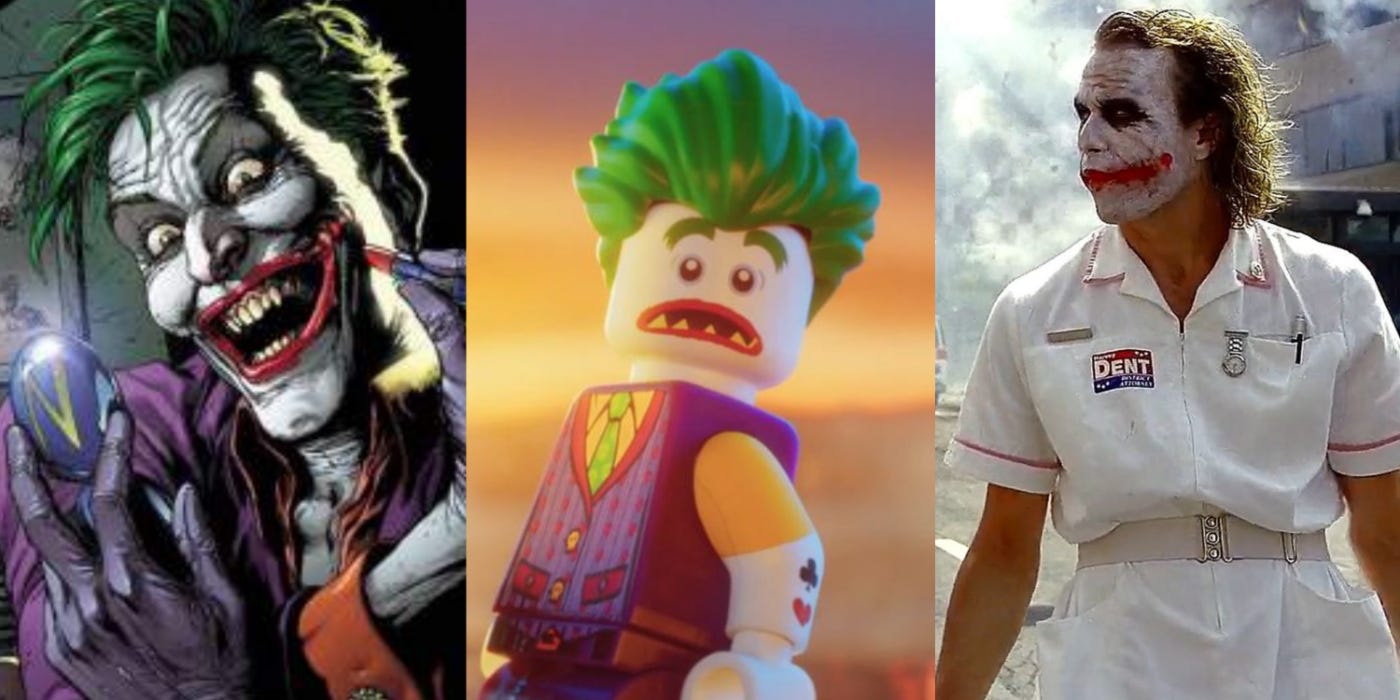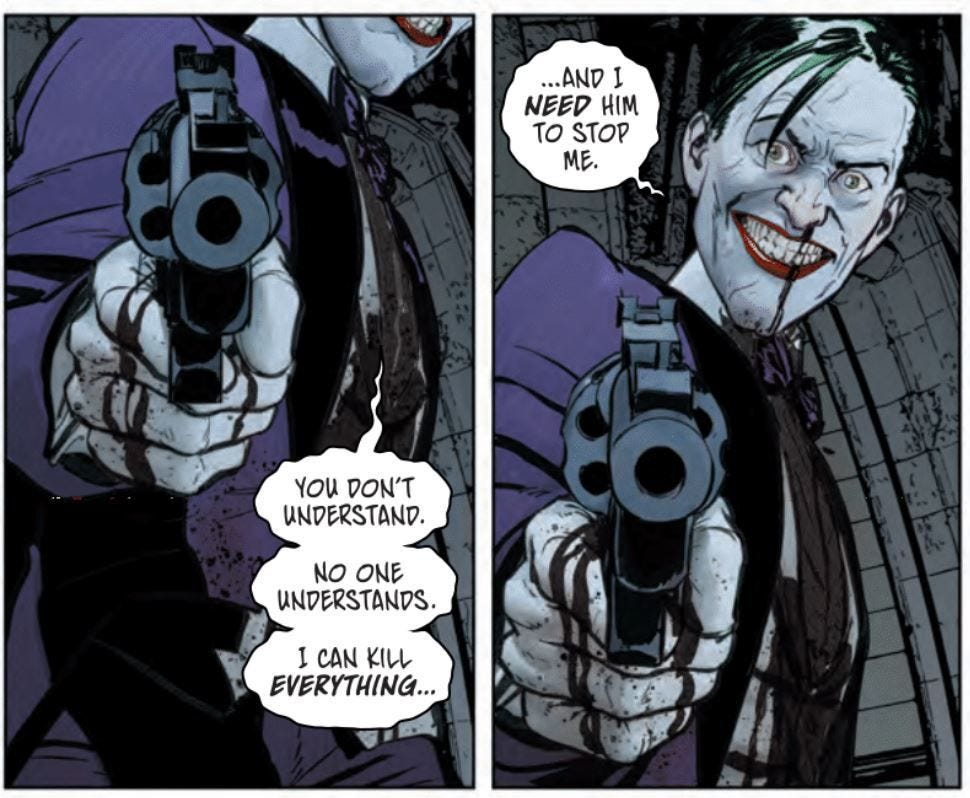Batman’s Joker And The “Homophobic Nightmare”
Despite what Fox News believes, the Joker has been queer for a long, long time.
Earlier this year, the Joker made headlines for a scene in his ongoing series, Joker: The Man Who Stopped Laughing. The story featured a spell gone wrong by the powerful magician Zatanna, who unwittingly “impregnated” the Joker with the shapeshifter Clayface.
In a political climate where anything even vaguely outside societal gender norms sets off alarms, it’s no wonder that this comic sparked outrage among far-right pundits. Fox & Friends complained about DC Comics putting out “woke garbage,” with one host making the clever observation that “he’s no longer the Joker, now he’s the Woker.”
Former Republican congressional candidate Robby Starbuck made a blatant self-report of a Tweet when he complained:
"In the new Joker comic he gets pregnant and gives birth. Yep, the Joker is trans now. At least the character is the Joker because a pregnant woman thinking they’re a pregnant man is the definition of a Joker. Who else is sick of this lunacy?”
What Fox and Starbuck fail to understand is that lunacy-- and Queerness-- are both core aspects of the Joker that have existed for several decades. The Joker is what we recognize now as a Queer-coded villain; it’s an incredibly common trope that appears even in children’s media. The most infamous example of this is Ursula from Disney’s The Little Mermaid, whose appearance was largely inspired by a drag queen and actor named Divine.
Frank Miller’s Interpretation Of The Joker
Frank Miller remains one of the most influential writers of Batman ever since the character’s conception in 1939. One of his most popular works is The Dark Knight Returns, published in 1986. Miller’s Joker was a twisted, flamboyant, violent villain who enjoyed putting on makeup and tapping into the effeminate. He’s often seen putting on lipstick as though he’s dolling himself up for the Dark Knight. Joker’s flamboyance also pervades into films, as well. In Christopher Nolan’s The Dark Knight, the Joker cross-dresses as a nurse in a frilly pink outfit for no reason other than his own enjoyment.
The Queer aspects of Joker’s personality were no mistake in Miller’s writing. He famously categorized the dynamic between Batman and the Joker as a “homophobic nightmare.” He expresses that crime (or the efforts to fight it) serves as a distorted outlet for the pair’s sexual urges. For the Joker, these urges often revolve around Batman himself. Joker’s attempted murder of Catwoman illustrates this clearly enough as he tells Selina, “I can kill everything, and I need him to stop me.”
Joker outright confesses his love for Batman in Death of the Family. Ironically enough, this comes out during a conversation with Catwoman once again. Selina puts the idea of Joker being in love with her fiance out in the open, and Joker responds “Of course. Isn’t it obvious?”
Batman And The Straight Man’s Power Fantasy
What makes these portrayals of Joker so pervasive is not just society’s fear of queerness, but also the contrast it creates between Joker and Gotham’s favorite hero. They are yin and yang, order and chaos… heterosexuality and Queer deviance.
Bruce Wayne is a brooding billionaire with extraordinary intelligence, strength, cunning, and futuristic technology. He can go toe to toe with anyone in DC Comics, despite having no superpowers of his own. Not only is Bruce Wayne incredibly powerful, but he’s also a suave playboy that can pull virtually any woman he wants. He is, in almost every aspect, the ultimate male power fantasy. The Joker, then, is his perfect opposite in every sense of the word; Batman is a heterosexual male’s ultimate power fantasy, while the Joker is a Queer fever dream.
Conclusion
As society progresses, queerness becomes less and less effective as a villainous trope. Now, most Batman fans would agree that the most disturbing interpretation of the Joker is the man who assaulted Barbara Gordon and left her paralyzed, and who abused Harley Quinn both emotionally and physically. Instead, queer tropes are more commonly seen in portrayals like The Lego Batman Movie, where Joker is meant to be a silly and endearing character.
Many other Batman rogues have been portrayed as queer in much more favorable (and legitimate) lights. The most primary examples are undoubtedly Harley Quinn and Poison Ivy, who have become one of DC Comics’ most popular couples in recent years. Even the Penguin and the Riddler had a messy romantic entanglement in the TV show Gotham.
Comic fans would be remiss to forget what made the Joker so popular in the first place. His “Queerness” is partially what elevates him from another evil clown to a complex, intriguing villain. It’s largely why, nearly a century after his creation, he remains one of the most enduring comic book characters of all time.







